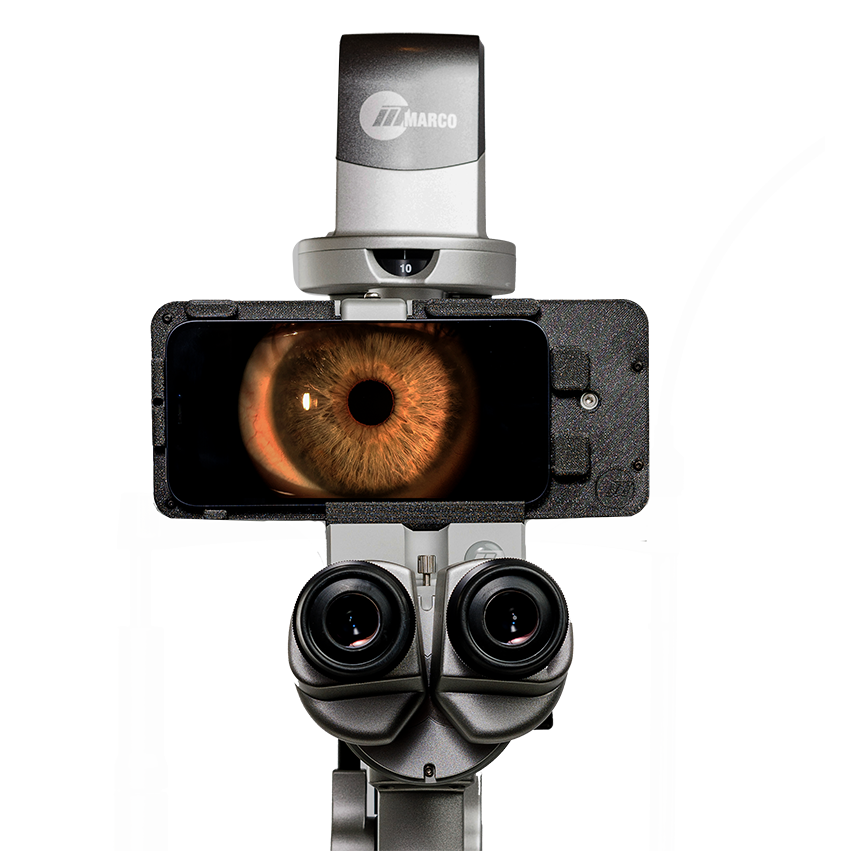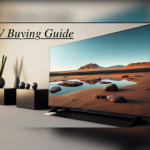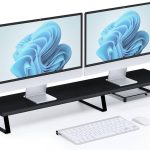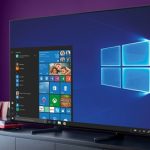Yes, you can use a TV as a monitor for your computer or gaming setup. Make sure the TV has the necessary input ports and supports the display resolution needed for your activities.
Using a TV as a monitor can provide a larger screen size for a more immersive experience, but it may not offer the same level of pixel density as a dedicated monitor, affecting image sharpness. Additionally, input lag and refresh rate differences between TVs and monitors can impact gaming performance.
Consider your specific needs and preferences before deciding to use a TV as a monitor.

Credit: www.amazon.com
Turning A Tv Into A Monitor
When setting up a TV as a monitor, ensure compatibility in terms of display resolution and screen size.
Explore various connectivity options to successfully connect your TV to your computer for a seamless experience.

Credit: www.headspin.io
Optimizing Tv Settings
When using a TV as a monitor, it’s important to optimize the TV settings to get the best display performance.
Adjusting Display Settings
To get optimal visuals, adjust brightness, contrast, and color settings to match your preferences.
- Bright colors can strain the eyes, so consider toning them down to reduce eye fatigue.
- Contrast should be adjusted to enhance clarity and sharpness of images.
Reducing Input Lag
Input lag refers to the time it takes for on-screen actions to respond to your input.
- Enable Game Mode on the TV settings to reduce input lag for a smoother gaming experience.
- Turn off post-processing effects such as motion smoothing to decrease input lag.
Audio Integration
Audio integration is an essential aspect of using a TV as a monitor, as it directly impacts the overall viewing and user experience. With the right audio setup, you can fully enjoy multimedia content and immerse yourself in the sound effects of your favorite games or movies.
Utilizing Tv Speakers
Utilizing the built-in speakers of your TV is a convenient way to achieve audio integration when using it as a monitor. Most modern TVs come with speakers that are capable of delivering decent sound quality, making them suitable for general use. This option eliminates the need for additional external hardware, simplifying the overall setup process.
Connecting External Speakers
Connecting external speakers to your TV allows for a more customizable audio experience. By utilizing external speakers, you can enhance the audio quality and create a surround sound environment, perfect for home theaters or gaming setups. This option provides greater flexibility in choosing the type and placement of the speakers, catering to specific audio preferences.
Ergonomic Setup
Ergonomic setup is crucial when using a TV as a monitor. It ensures that you maintain a comfortable and efficient working posture, reducing the risk of strain and discomfort. Paying attention to ideal viewing distance, mounting, and positioning will help optimize your setup for a better user experience.
Ideal Viewing Distance
Choosing the right viewing distance is essential for both comfort and visual clarity. Sitting too close can strain your eyes, while sitting too far may lead to difficulty in reading text or identifying small details.
To determine the ideal viewing distance, consider the size of your TV. As a general rule, a distance of about 1.5 to 2 times the diagonal screen size is recommended. For example, if you have a 32-inch TV, the ideal viewing distance would be approximately 4.5 to 6 feet.
However, individual preferences may vary. Some people may prefer to sit a bit closer for a more immersive experience, while others may find it more comfortable to sit farther away.
Mounting And Positioning
Mounting your TV at eye level can help prevent neck and back strain. Placing it too high or too low can lead to discomfort and poor posture.
If you have a desk, consider using a monitor arm or a TV mount that allows you to adjust the height and tilt of the screen. This flexibility enables you to position your TV at a comfortable eye level, ensuring that you don’t have to strain your neck or eyes when working or watching.
Ensure that your TV is positioned directly in front of you to maintain a straight line of sight. Avoid placing it at an angle, as this can result in distorted images and compromised viewing experience.
Additionally, reducing glare is crucial for optimal viewing. Place your TV in a location where there is minimal ambient light reflecting directly onto the screen. Using curtains or blinds to control the amount of natural light can also help minimize glare.
Summary
In summary, setting up your TV as a monitor with ergonomics in mind is essential for a comfortable and productive experience. Pay attention to the ideal viewing distance, mounting, and positioning to reduce strain on your eyes, neck, and back. By optimizing your setup, you can enjoy the benefits of using a TV as a monitor without sacrificing your well-being.
Special Considerations
Gaming And Refresh Rates
One of the major reasons people consider using a TV as a monitor is for gaming purposes. However, it’s important to understand the impact it can have on your gaming experience. When it comes to gaming, the refresh rate of the TV becomes crucial.
The refresh rate determines how many times per second the image on the screen refreshes. A higher refresh rate provides smoother motion, making it ideal for fast-paced games. Most modern TVs have a refresh rate of 60Hz, which is generally acceptable for casual gaming.
However, if you’re a hardcore gamer or plan to play competitive games, you might want to consider a TV with a higher refresh rate, such as 120Hz or even 240Hz. These higher refresh rates can help reduce motion blur and provide a more immersive gaming experience.
Potential Eye Strain
Using a TV as a monitor for extended periods can potentially lead to eye strain, especially if the TV is not optimized for close-up viewing. TVs are designed to be viewed from a distance, unlike monitors that are meant to be used up close.
The larger screen size of TVs can make reading small text or navigating through menus more challenging. This strain on your eyes can cause symptoms like headaches, eye fatigue, and blurred vision.
To minimize eye strain, ensure you sit at an appropriate distance from the TV and adjust the screen’s brightness and contrast levels. You can also consider using blue light filters or taking regular breaks to rest your eyes.
Furthermore, consider the resolution of the TV. TVs generally have lower pixel densities compared to monitors, resulting in less sharpness and clarity. This can strain your eyes even more, especially when reading small text or working on detailed tasks.
When using a TV as a monitor, it’s important to strike a balance between size and viewing comfort. Opting for a smaller TV or considering a proper monitor with a resolution optimized for close-up viewing might be a better choice if you prioritize eye comfort and productivity.

Credit: marco.com
Frequently Asked Questions Of Can U Use A Tv As A Monitor
Is It Ok To Use Tv As Computer Monitor?
Yes, it’s okay to use a TV as a computer monitor. Make sure the TV has compatible ports. Adjust display settings for optimal viewing. Consider the TV’s refresh rate for smoother visuals. Keep in mind that text may not be as sharp as on a regular monitor.
Can I Use Tv As Monitor For Gaming?
Yes, you can use a TV as a monitor for gaming. Ensure it has the necessary ports and supports high resolutions for an optimal experience.
Which Tv Can Be Used As Monitor?
You can use a Smart TV or a TV with HDMI input as a monitor. It’s important to check compatibility and resolution for the best experience.
How Can I Use My Tv As A Monitor Without A Monitor?
You can use your TV as a monitor by connecting it to your computer using an HDMI cable. Simply plug one end into the HDMI port on your computer and the other end into the HDMI port on your TV.
Then, switch your TV to the correct input source to use it as a monitor.
Conclusion
To sum up, using a TV as a monitor has both advantages and limitations. It can enhance the viewing experience and provide a large screen for work or entertainment. However, the resolution and response time may not be as high as a dedicated monitor.
Consider your specific needs and budget before making a decision.









